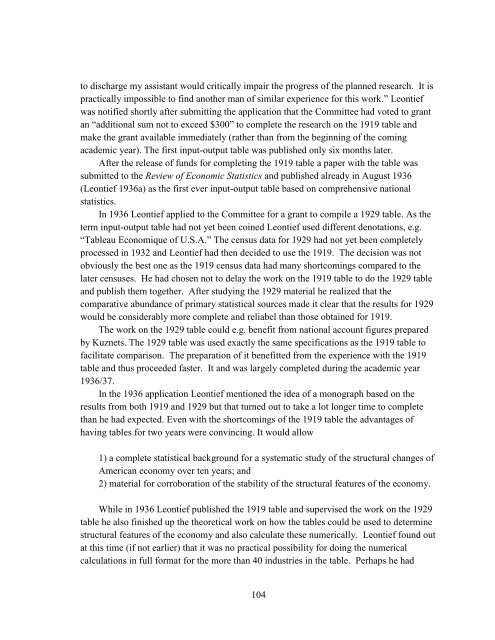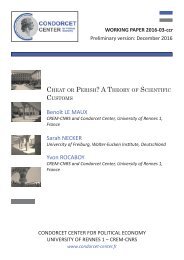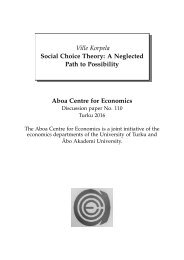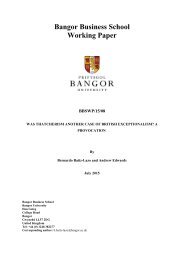MEMORANDUM
n?u=RePEc:hhs:osloec:2016_018&r=hpe
n?u=RePEc:hhs:osloec:2016_018&r=hpe
You also want an ePaper? Increase the reach of your titles
YUMPU automatically turns print PDFs into web optimized ePapers that Google loves.
to discharge my assistant would critically impair the progress of the planned research. It is<br />
practically impossible to find another man of similar experience for this work.” Leontief<br />
was notified shortly after submitting the application that the Committee had voted to grant<br />
an “additional sum not to exceed $300” to complete the research on the 1919 table and<br />
make the grant available immediately (rather than from the beginning of the coming<br />
academic year). The first input-output table was published only six months later.<br />
After the release of funds for completing the 1919 table a paper with the table was<br />
submitted to the Review of Economic Statistics and published already in August 1936<br />
(Leontief 1936a) as the first ever input-output table based on comprehensive national<br />
statistics.<br />
In 1936 Leontief applied to the Committee for a grant to compile a 1929 table. As the<br />
term input-output table had not yet been coined Leontief used different denotations, e.g.<br />
“Tableau Economique of U.S.A.” The census data for 1929 had not yet been completely<br />
processed in 1932 and Leontief had then decided to use the 1919. The decision was not<br />
obviously the best one as the 1919 census data had many shortcomings compared to the<br />
later censuses. He had chosen not to delay the work on the 1919 table to do the 1929 table<br />
and publish them together. After studying the 1929 material he realized that the<br />
comparative abundance of primary statistical sources made it clear that the results for 1929<br />
would be considerably more complete and reliabel than those obtained for 1919.<br />
The work on the 1929 table could e.g. benefit from national account figures prepared<br />
by Kuznets. The 1929 table was used exactly the same specifications as the 1919 table to<br />
facilitate comparison. The preparation of it benefitted from the experience with the 1919<br />
table and thus proceeded faster. It and was largely completed during the academic year<br />
1936/37.<br />
In the 1936 application Leontief mentioned the idea of a monograph based on the<br />
results from both 1919 and 1929 but that turned out to take a lot longer time to complete<br />
than he had expected. Even with the shortcomings of the 1919 table the advantages of<br />
having tables for two years were convincing. It would allow<br />
1) a complete statistical background for a systematic study of the structural changes of<br />
American economy over ten years; and<br />
2) material for corroboration of the stability of the structural features of the economy.<br />
While in 1936 Leontief published the 1919 table and supervised the work on the 1929<br />
table he also finished up the theoretical work on how the tables could be used to determine<br />
structural features of the economy and also calculate these numerically. Leontief found out<br />
at this time (if not earlier) that it was no practical possibility for doing the numerical<br />
calculations in full format for the more than 40 industries in the table. Perhaps he had<br />
104





